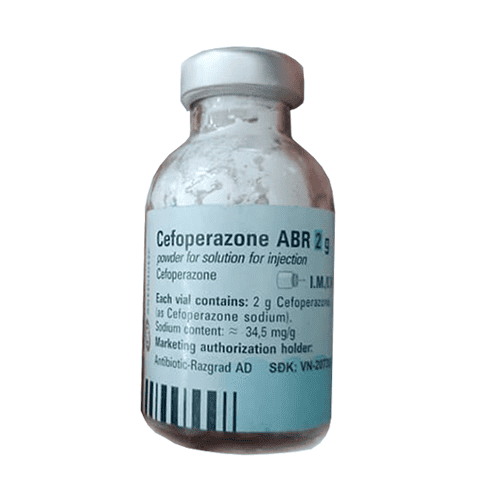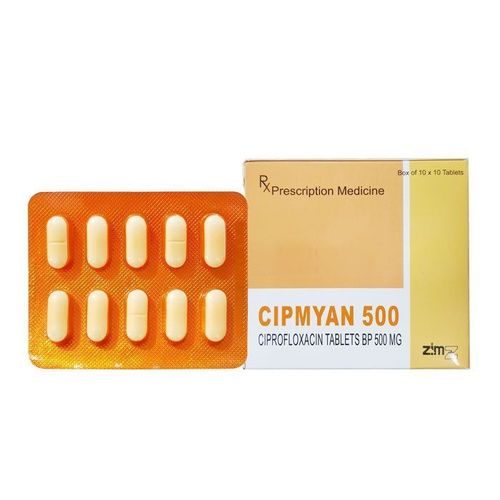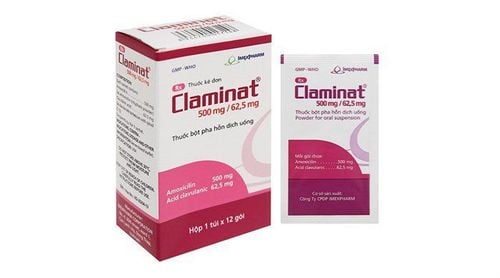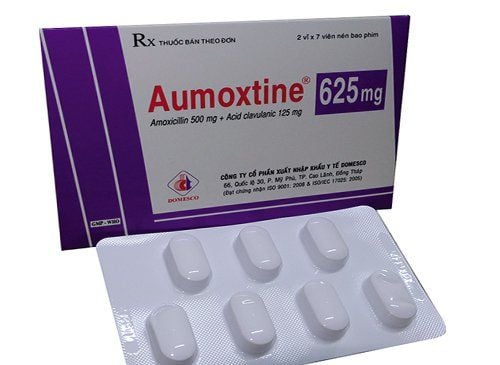This is an automatically translated article.
Hwazon Inj is an injectable antibiotic, indicated in cases of bacterial infections that have not responded to conventional treatment. To understand more about the use of the drug and the notes when using it, read through the article below.
1. Uses of Hwazon Inj
Hwazon Inj drug has the main ingredient is Cefoperazone sodium equivalent to Cefoperazone 1g. Prepared as a powder for injection.
Cefoperazone is a 3rd generation injectable cephalosporin. The antibacterial action of cefoperazone is through inhibition of bacterial cell wall synthesis by acylation of membrane-bound transpeptidase enzymes, which helps to prevent cross-linking of bacterial cells. The peptidoglycan chain is required for the strength and durability of the bacterial cell wall.
Cefoperazone has similar activity to the antibiotic ceftazidime, but is slightly less active against some Enterobacteriaceae. Cefoperazone is also active against Pseudomonas aeruginosa, but less so than ceftazidime. Cefoperazone is very stable against many beta-lactamases produced by gram-positive and gram-negative bacteria but is more susceptible to hydrolysis by some beta-lactamases than cefotaxime.
2. Indications and contraindications of the drug Hwazon Inj
2.1 Indications Hwazon 1g is indicated in the treatment of infections caused by sensitive infections, including
Infections of the biliary tract; Upper and lower respiratory tract infections; Skin and soft tissue infections; Infections of bones, joints, kidneys and urinary tract; Pelvic and gynecological infections; endometritis; Peritonitis and intra-abdominal infections; bacteremia, gonorrhea; 2.2 Contraindications: Hwazon Inj is contraindicated in patients with a history of allergy to cefoperazone and cephalosporin antibiotics.
3. Dosage and usage of Hwazon Inj
How to use: Cefoperazone is used as the sodium salt, used for deep intramuscular injection, intermittent intravenous infusion (about 15 - 30 minutes) or continuously. Although cefoperazone has been given by slow intravenous injection over 3 to 5 minutes, the manufacturers do not recommend this drug by the rapid, intravenous route.
When injecting can be mixed with many different solvents such as 5% Dextrose solution, 10% Dextrose solution, 0.9% sodium chloride...
Dosage:
Adults
For mild infections and Average: The usual dose is 1 - 2 g, once every 12 hours. For severe infections: can be used as high as 12 g/24 hours, divided into 2-4 doses. Up to a dose of 16 g/day by continuous infusion has been used in infectious patients who are immunocompromised. Cefoperazone therapy for group A beta-hemolytic streptococci infections must be continued for at least 10 days to help prevent acute rheumatic fever or glomerulonephritis.
Children: Intravenous injection for children at a dose of 25 to 100 mg/kg, every 12 hours;
Newborns at a dose of 50mg/kg every 12 hours; Young children 25 - 50 mg/kg every 6 - 12 hours. The maximum dose is 400 mg/kg/day, not to exceed 6g/day. Due to the toxic nature of benzyl alcohol to neonates, the drug should not be administered intramuscularly to neonates mixed with solutions containing benzyl alcohol. Patients with renal failure:
When used, cefoperazone can be used at the usual dose without dosage adjustment, because the drug is mainly eliminated via the biliary tract. If there are signs of drug accumulation, it is necessary to reduce the dose accordingly. For patients on hemodialysis, the dose of cefoperazone may need to be adjusted after hemodialysis, because the antibiotic cefoperazone will be partially eliminated during hemodialysis. Dosage for patients with liver disease or biliary obstruction should not exceed 4g/24 hours, or dose for patients with both liver and kidney failure is 1g to 2g/24 hours; If higher doses are used, plasma concentrations of cefoperazone should be monitored to avoid overdose.
4. Side effects of Hwazon Inj
When taking the drug you may experience some unwanted effects, including:
Common: Temporary increase in eosinophils, positive Coombs test; diarrhea; maculopapular skin rash; Uncommon: Fever; Reversible neutropenia, hemolytic anemia, thrombocytopenia; Allergies Urticaria, itching; Temporary pain at the site of intramuscular injection, phlebitis at the site of intravenous infusion; Patients need to inform the doctor about the side effects encountered so that measures can be taken.
5. Notes when using Hwazon Inj
Hypersensitivity reactions (including anaphylaxis) have been observed among patients allergic to beta-lactam antibiotics, so cefoperazone antagonists should be used with caution, monitoring for signs and symptoms of anaphylaxis during the first dose of the drug; Everything should be ready to treat anaphylaxis if the patient has previously been allergic to penicillin. However, with cefoperazone, cross-sensitivity reactions to penicillin are usually of low incidence.
As with other antibiotics, long-term use of cefoperazone may result in overgrowth of non-susceptible strains. If superinfection occurs, the drug should be discontinued and appropriate treatment instituted.
Caution should be exercised when prescribing broad-spectrum antibiotics to people with gastrointestinal disease, especially inflammatory bowel disease.
Cefoperazone antibiotic should not be used in mild infections, should only be used when oral antibiotics have poor response or resistance. To avoid the risk of drug resistance.
It is necessary to monitor prothrombin time in patients at risk of hypoprothrombinemia and use concomitantly with vitamin K if necessary. Especially monitor prothrombin levels in patients with malabsorption disorders or receiving parenteral nutrition; If necessary, additional vitamin K may be used.
Pregnant women : Reproduction studies in mice, rats and monkeys have shown no harm to the fetus. Cephalosporins are generally considered safe to use during pregnancy. But you also need to be careful when using it. Caution when using with nursing women: Cefoperazone is excreted in breast milk at low concentrations (about 0.4 - 0.9 micrograms/ml after infusion with a dose of 1 g). The effects on the nursing infant are unknown. However, the drug should not be used with caution during this time.
6. Drug and food interactions
Interactions with other drugs:
Concomitant use with aminoglycoside antibiotics and some cephalosporins may increase the risk of nephrotoxicity. The antibacterial activity of cefoperazone and aminoglycosides may be additive or synergistic against several Gram-negative bacteria including P. aeruginosa and Serratia marcescens. However, these two antibiotics are physically incompatible and should not be used concurrently. Concomitant use of warfarin and heparin may potentiate the prothrombin-lowering effect of cefoperazone and thereby increase the risk of bleeding. When used concomitantly with drugs with hepatotoxic effects, liver function should be monitored. Food Interactions: Disulfiram-like reactions to alcohol with characteristic symptoms such as flushing, sweating, headache, nausea, vomiting, and tachycardia may occur if alcohol is consumed or taken with the drug. products containing alcohol during treatment and within 72 hours of taking cefoperazone.
Hopefully with the above sharing will help the process of using drugs in patients effectively, safely as well as reduce risks to the patient's health. If you have any further questions, you can ask your doctor or prescribing pharmacist.
Please dial HOTLINE for more information or register for an appointment HERE. Download MyVinmec app to make appointments faster and to manage your bookings easily.













